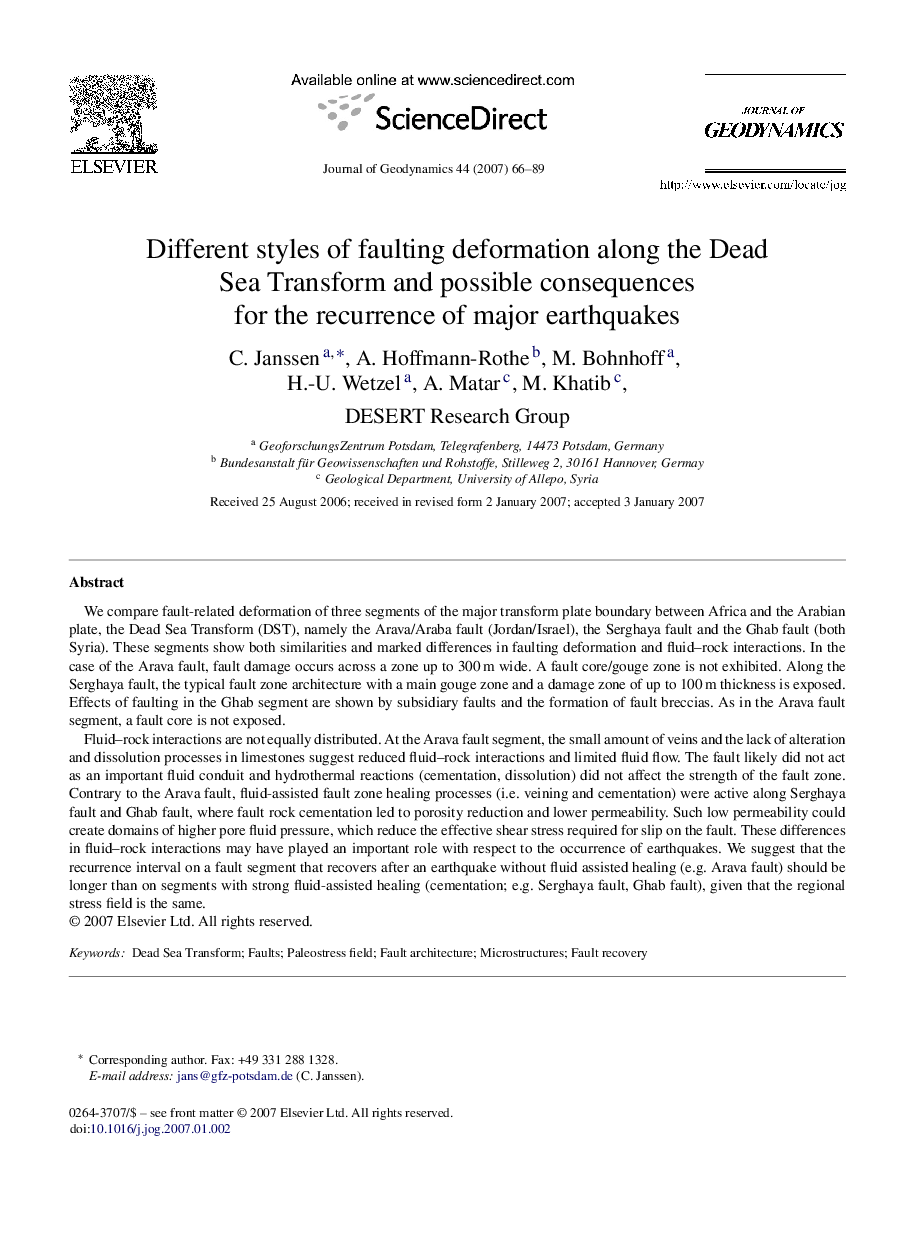| Article ID | Journal | Published Year | Pages | File Type |
|---|---|---|---|---|
| 4688755 | Journal of Geodynamics | 2007 | 24 Pages |
We compare fault-related deformation of three segments of the major transform plate boundary between Africa and the Arabian plate, the Dead Sea Transform (DST), namely the Arava/Araba fault (Jordan/Israel), the Serghaya fault and the Ghab fault (both Syria). These segments show both similarities and marked differences in faulting deformation and fluid–rock interactions. In the case of the Arava fault, fault damage occurs across a zone up to 300 m wide. A fault core/gouge zone is not exhibited. Along the Serghaya fault, the typical fault zone architecture with a main gouge zone and a damage zone of up to 100 m thickness is exposed. Effects of faulting in the Ghab segment are shown by subsidiary faults and the formation of fault breccias. As in the Arava fault segment, a fault core is not exposed.Fluid–rock interactions are not equally distributed. At the Arava fault segment, the small amount of veins and the lack of alteration and dissolution processes in limestones suggest reduced fluid–rock interactions and limited fluid flow. The fault likely did not act as an important fluid conduit and hydrothermal reactions (cementation, dissolution) did not affect the strength of the fault zone. Contrary to the Arava fault, fluid-assisted fault zone healing processes (i.e. veining and cementation) were active along Serghaya fault and Ghab fault, where fault rock cementation led to porosity reduction and lower permeability. Such low permeability could create domains of higher pore fluid pressure, which reduce the effective shear stress required for slip on the fault. These differences in fluid–rock interactions may have played an important role with respect to the occurrence of earthquakes. We suggest that the recurrence interval on a fault segment that recovers after an earthquake without fluid assisted healing (e.g. Arava fault) should be longer than on segments with strong fluid-assisted healing (cementation; e.g. Serghaya fault, Ghab fault), given that the regional stress field is the same.
